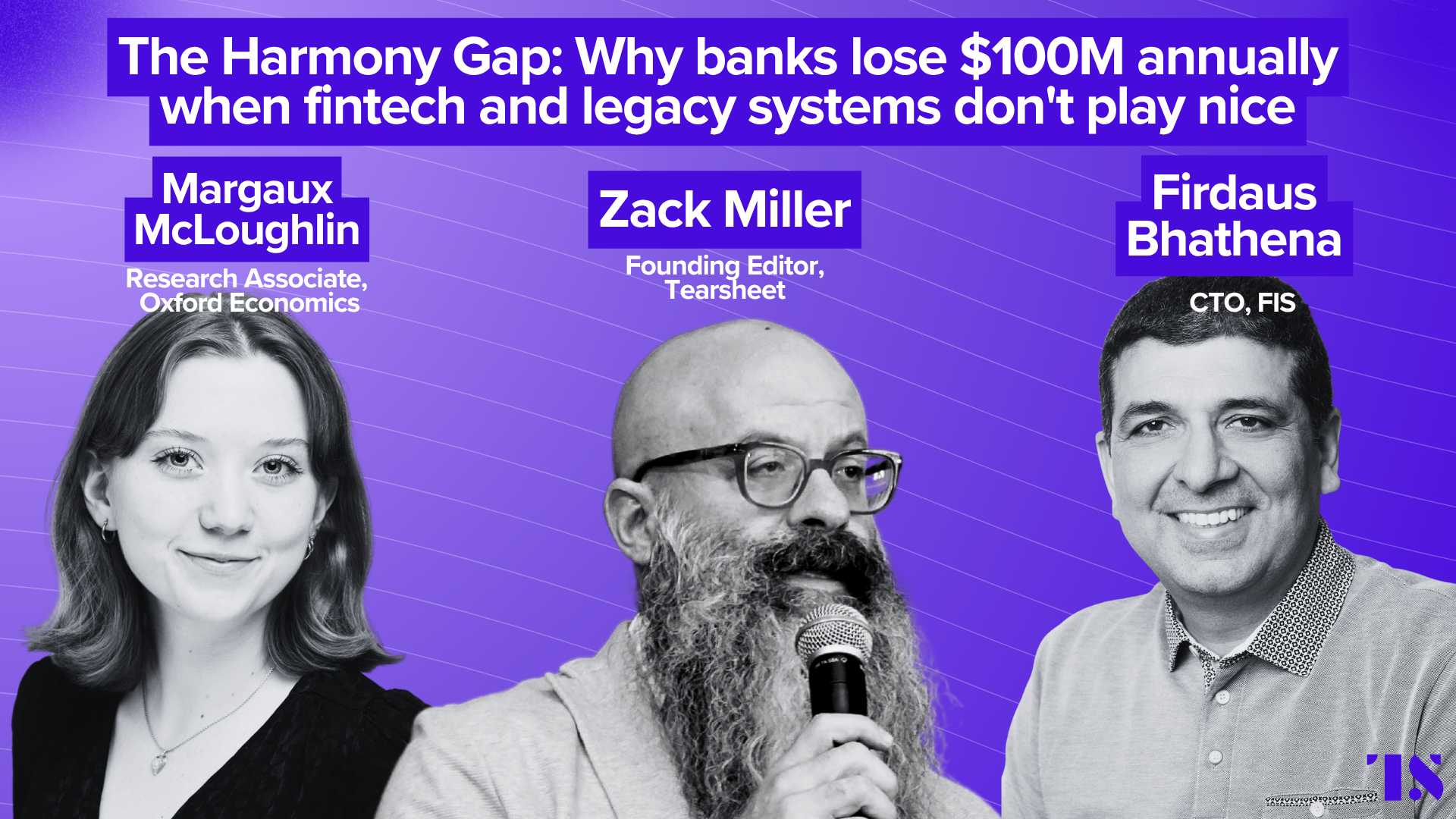The Harmony Gap: Why banks lose $100M annually when fintech and legacy systems don’t play nice
- Financial disharmony costs organizations $100 million annually as money struggles to flow seamlessly through trading, banking, and payment systems, with cyberthreats driving a third of losses.
- FIS CTO Firdaus Bhathena and Oxford Economics' Margaux McLoughlin discuss strategic solutions including AI integration, enhanced training, and industry partnerships to address the growing harmony gap in financial services.

Financial institutions are losing an average of $100 million annually due to a fundamental disconnect between fintech innovation and traditional financial systems. A phenomenon FIS and Oxford Economics have termed the “Harmony Gap.”
“We hear a lot from people about the challenges and friction they see in the money lifecycle,” explains FIS CTO, Firdaus Bhathena, at his firm’s Emerald Conference at the end of May in Orlando, Florida.. “But we had not been able to quantify that.” His firm’s collaboration with Oxford Economics is changing that, providing hard data on what many suspected but couldn’t measure.
The new research, based on surveys of 1,000 executives across the US, UK, and Singapore, reveals that disharmony in the financial system is a costly reality affecting everything from cybersecurity to operational efficiency. As Margaux McLoughlin of Oxford Economics puts it, “When there are disruptions across the money lifecycle, that’s what we call disharmony.”
Understanding what the research describes as a Harmony Gap requires examining how the modern financial ecosystem operates, why the human cost extends far beyond corporate losses, and what organizations can do to bridge the disconnect between innovation and implementation. The path forward requires a rethinking of how financial institutions approach systemic challenges in an interconnected world.
Watch the full episode
Listen to the full episode
The money lifecycle under stress
The concept of the “money lifecycle” forms the foundation of understanding disharmony. McLoughlin breaks it down into three critical stages: “money put to work” (trading, lending), “money at rest” (core banking, digital banking), and “money in motion” (payments, wire transfers). When money flows seamlessly across these stages, the system operates in harmony. When it doesn’t, the costs add up quickly.
Oxford Economics’ research identified nine key sources of tension disrupting this flow, with cyberthreats emerging as the dominant factor. “About a third of [the $100 million in costs] is coming from cyber threats,” McLoughlin notes. “So that’s probably the top concern for organizations right now.” Other significant contributors include fraud, illiquidity, operational inefficiencies, and regulatory compliance issues.
For Bhathena, this data validation was crucial. “Everything in our business is based on ROI and rate of return. It’s the financial industry after all,” he explains. “And so that’s why we turned to Oxford Economics and we said, help us figure this out.”
The human cost of financial friction
The impact extends beyond corporate balance sheets to individual consumers. Bhathena shared a personal example that illustrates how disharmony affects real people: while attending the FIS conference, he was dealing with a wire transfer that was holding up closing on his home. “My wife is sending me anxious text messages saying, it’s actually going to happen, right?” he recalls.
This human element underscores a broader truth about financial disharmony. “The people who suffer the most are the people we care about the most,” Bhathena emphasizes. “Our friends and family, our consumers, all around us.”
McLoughlin echoes this sentiment, noting that disharmony “not only affects an organization, it affects their customers as well. If their money isn’t able to move to where they want it to go, if a cyber threat occurs, or if there’s fraud within an organization, they lose trust.”
The awareness gap
While organizations can quantify the costs they’re experiencing, there’s a significant gap in understanding how to address these challenges effectively. “They are able to identify where the sources are coming from,” McLoughlin observes. “With cyber threats or fraud, every organization is aware of them. They have training on them. They have technologies in place to try and deal with them. But there’s still a lack of a strategic approach.”
This awareness paradox reflects a broader challenge in the industry: knowing problems exist but struggling to prioritize solutions. Bhathena frames it in practical terms: “You’re always competing for resources. How do you prioritize? If I go to Stephanie, our CEO, and I say we need to make a certain investment, I better be prepared to explain why.”
The research provides that justification, offering a framework for understanding not just what the problems are, but how much they’re costing and where to focus remediation efforts.
Strategic solutions for systemic problems
The research points to three key strategies for addressing the harmony gap.
- Organizations need to prioritize and integrate advanced technology, particularly AI and machine learning. “So many of these technologies can be used not only to protect from cyber threats or fraud,” McLoughlin explains, “but they can also increase operational efficiency and decrease human errors.”
- Firms need to ensure that organizational talent is educated on areas of disharmony. Traditional training approaches aren’t sufficient given the pace of technological change. “We all have to do those fraud and cyber training every year,” McLoughlin notes, “but we found that it’s just not enough.”
- Strategic partnerships can provide technology integration capabilities, and talent that organizations may lack internally. Finally, organizations need to understand their specific points of tension to act effectively.
Bhathena emphasizes the importance of industry collaboration, even among competitors. “Sometimes that might mean working with people that you actually compete with in certain areas,” he says. “But I’m a big believer in the platform approach where a rising tide lifts all boats.”
Fighting technology with technology
Industry leaders know that many of the tools causing disruption can also provide solutions. Bad actors, as Bhathena notes, “are not in a regulated industry. They’ve got nobody sitting over there watching. They’ve got all the tools and no regulations.”
The response requires sophisticated technology deployment rather than avoidance. “Telling people stop using all these things is not going to work,” Bhathena explains.
Instead, the path forward involves “awareness, technology, the right training for your people and the right processes.” It’s a comprehensive approach that acknowledges the complexity of modern financial systems while providing concrete steps for improvement.


